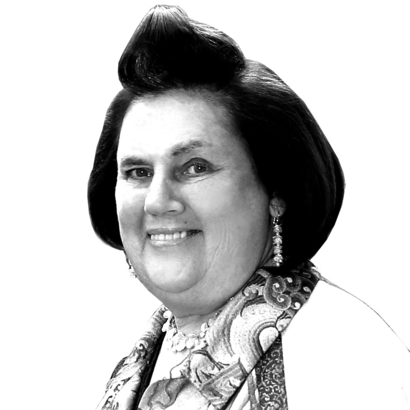“A handbag? A handbag?”
Since the days of Oscar Wilde and early Louis Vuitton, luxury brands have been getting carried away.
Ah! The importance of being earnest—about handbags. Lady Bracknell, the supreme social snob, epitomized the theme of Wilde’s final play, which he called “a trivial comedy for serious people.”
It was staged three months before the witty Irish playwright’s 1895 criminal conviction for gross indecency, which led to the painful ending of his career.
The play’s social parody centers on a young man known as Ernest/Jack, who was found as a baby in a cloakroom at Victoria Station in a leather handbag. Little did the protagonists know that Wilde, born in 1854, shared his birthday year with the founding of Louis Vuitton, whose enormous steamer trunks could transport full-grown persons, never mind babies.
The Louis Vuitton trunks grew smaller, becoming neat travel pieces that built a luggage empire, down to the most glamorous of picnic cases. Certainly the “LV” monogram of initials and geometric flowers, adopted in 1896 to deter counterfeiters, added to the allure.
By the time hip Virgil Abloh became artistic director of Louis Vuitton men’s wear, in 2018, shoppers seemed to be following another of Wilde’s famous epigrams: “I can resist everything except temptation.”
A Formidable Sales Force
Is today, when much of the world is locked down and working from home, the moment to think about fancy handbags? Even if you do spend upwards of $4,000 on Dior’s Lady D-Lite bag, what will you do with it? Take photos for Instagram? Prop it up on a bedroom shelf to dream about post-coronavirus parties? Perhaps it would be wiser to invest in a petite nylon Prada bag.

I asked Gabriela Hearst, who started her fashion line with her privately sold Nina handbags, whether she imagines bags blooming now that she has been made the new artistic director of Chloé in Paris.
“We’ve been carrying bags for 5,000 years, so I don’t think they’re going anywhere,” she said. “And phones are getting so big, we will probably end up with steamer trunks! The first question we get in customer service is ‘Will my phone fit?”’
Even if you do spend upwards of $4,000 on Dior’s Lady D-Lite bag, what will you do with it?
Geoffroy de la Bourdonnaye, the Richemont Group’s C.E.O. of Chloé from 2010 to 2019, provided clarity on the importance of being earnest about selling designer handbags.
“The most profitable brands derive between 50 and 80 percent of their sales, and even more of their profits, from accessories,” he explained, adding that “leather bags account for at least 70 percent, followed by shoes and small accessories, like belts. For Louis Vuitton, I assume that bags and small accessories [leather and canvas goods] account for around 85 percent of its total business.”
What kicked off the rage for buying bags? Anyone who has greeted with wild enthusiasm the delivery of a piece of clothing bought online—and then returned it, chastened—knows that a bag is a sure digital purchase.
And You, Gentlemen?
But there remains a fashion mystery. Why have men’s handbags never taken on the importance or variety of women’s versions? In the past five or so years, the traditional briefcase has disappeared in favor of the backpack, thanks in no small part to the influence of tech titans and the laid-back, grad-student style of Silicon Valley.
Federico Marchetti, founder of Yoox Net-a-Porter, says that although online sales of bags consistently increased from 2018 to 2020, men’s bags are not seeing an increase in sales now. “In my opinion, men are used to pockets, and reducing the things they carry with them to a minimum,” he said. Significantly, the women’s-clutch and shoulder-bag categories have gained market share recently.
Marchetti’s research suggests that shoppers buy bags regardless of the occasion—or lockdowns. But as fashion becomes increasingly fluid with changing lifestyles, will “It” handbags ever have equal status for both sexes?
“There is no doubt that men’s handbags do not record the same success as casual wear or sports shoes,” Raffaello Napoleone said. He is chief executive of Pitti Immagine, the Italian men’s-wear trade fair that, because of the pandemic, will take place only in a digital format.
“Looking at Off-White, JW Anderson, or even Supreme, something new has been invented in accessories,” he wrote. “Recently, messenger bags have been the most influential, and all kinds of accessories are using new technical performance and recyclable fabric as outdoor or sport products.”
“For sure, the classical briefcase is not fashionable,” he continued. “It is difficult to imagine a young manager taking his MacBook Pro out of a brown or black leather briefcase!”
I searched for a picture of Oscar Wilde with a man bag, to fit with his tailored coat and elegant walking stick. But handbags, there were none.
Suzy Menkes is a storied fashion journalist and the author of several books, including The Royal Jewels and Fashion Designers A-Z: Etro Edition


